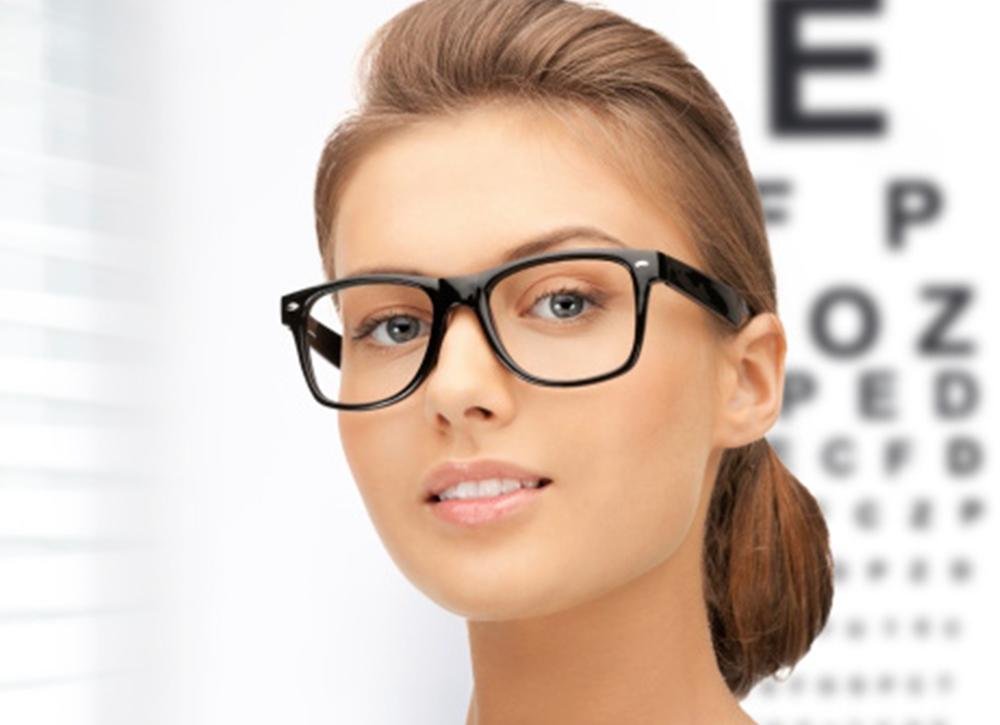In the previous article, we discussed “Are black eyeglass frames popular?”. In this article, let’s talk about “Should I wear my glasses all the time if I'm nearsighted?"
A student was short-sighted, so he went with a pair of 200-degree myopia glasses. However, his classmates told him that myopia should not be worn all the time, otherwise the degree will be higher and higher. Is this statement true? Does frequent wearing myopia glasses increase the degree of myopia? No matter how far you are looking, your myopia glasses should always be worn. Many people worry that the more myopia glasses are worn, the greater the degree. In fact, this is a misunderstanding. The best way to wear myopia glasses is to wear them often, rather than not wearing them from time to time.
How are we nearsighted?
The light from external objects to the eye needs to be refracted by the lens before it can be imaged on the retina. The refractive power of the lens depends on the contraction and relaxation of the ciliary muscle. When we look at close objects, the ciliary muscles contract and the lens becomes thicker. When we look at distant objects, the ciliary muscles relax and the lens becomes thinner. Adjust the focal length of near and far objects so that they will show a clear image on the retina. If you use your eyes too often and the longer the ciliary muscles work continuously, the ciliary muscles will spasm because of too much tension. At this time, the lens cannot be adjusted and thinned. After the light from a distant object is refracted by the lens, the imaging position will fall in front of the retina instead of on the retina. Only a blurred image can be seen, which becomes myopia.
There is another situation. For some people, due to genetic factors, in the process of growth and development, the front and rear wheelbase of the eyeball will gradually become longer. In this way, although the adjustment function of the ciliary muscle and the lens is normal, the image formed will also fall in front of the retina due to the longer the axis distance of the eyeball, which can also cause myopia.
The two causes of myopia are different. Myopia caused by ciliary muscle spasm is called 'pseudo-myopia'. As long as the ciliary muscles are relaxed, myopia can be reversed. Myopia caused by the extension of the wheelbase of the front and back of the eyeball is called 'true myopia', which cannot be reversed and can only be corrected by myopia glasses.
Adolescents and adults with myopia
Teenagers have heavy learning tasks, and excessive eye use is the norm, so pseudomyopia is the majority. And many of them have false and true myopia coexistence. As adolescents grow and hair, the eyeballs are also developing, and the wheelbase may be further lengthened, so myopia will continue to progress and deepen. The use of mydriatics by adolescents can force the ciliary muscles to relax and eliminate pseudomyopia. But after the pupil is dilated, the ciliary muscles will also lose their ability to adjust, changing from 'nearsightedness' to 'hyperopia', which will delay daily learning. And after the efficacy of the drug has passed, if you continue to use your eyes unscientifically, pseudomyopia will still occur. Therefore, the mydriatic agent is only used as an auxiliary method to eliminate false myopia when wearing myopia glasses, not as a treatment method for myopia.
Adult myopia is based on true myopia. In addition, the eyeballs of adults will no longer develop, so the degree of myopia is relatively fixed and rarely changes.
Should I wear glasses all the time for myopia?
Whether it is false myopia or true myopia, as long as a pair of suitable myopia glasses are used to complement the missing refractive power of the lens, the image of the object can fall on the retina again, and the distant objects can be seen again. Adolescents usually use high eye intensity and often wear myopia glasses, so that the ciliary muscles do not need to be 'so tired' to adjust, which can avoid further aggravation of pseudomyopia. However, adolescents are still in the process of development, and the degree of true myopia will gradually increase with age. Therefore, as the degree of myopia develops, refraction should be performed at regular intervals, and appropriate glasses for myopia can be prepared to prevent false myopia.
For adults under 200 degrees, because the degree is relatively light, they can wear glasses when they are looking at the distance and not wearing glasses when they are near, which has little effect on vision. But for adults with high myopia, because of the weak adjustment ability of the eyes, it is recommended to wear glasses regardless of near vision or distance vision.
In summary, wearing myopia glasses is to reduces eye fatigue and prevents the occurrence of false myopia. Wearing myopia glasses from time to time may aggravate the degree of myopia, and wearing them often does not cause a burden on the eyes. Therefore, for myopia glasses, wearing them frequently is the most correct way to wear them.
Thank you for your time in reading our passage “Should I wear my glasses all the time if I'm nearsighted?”. For more information about sunglasses and eyeglasses, please continue to follow KoalaEye Blog. Also, it is welcome to share and forward to Facebook and Twitter.





































